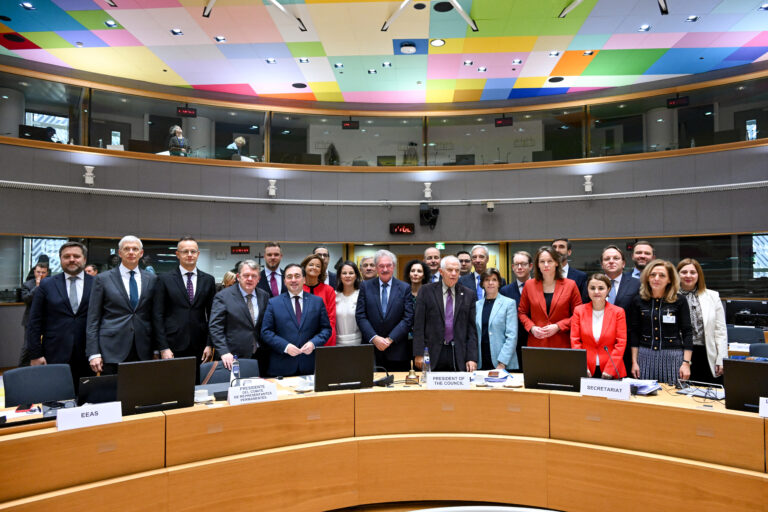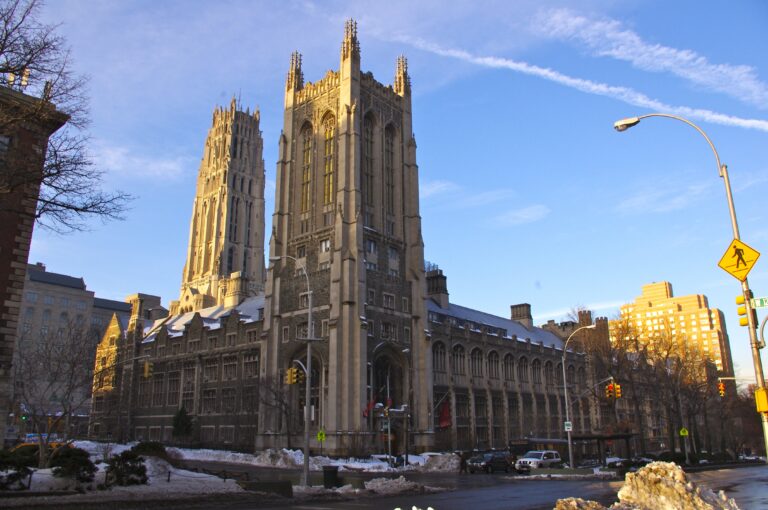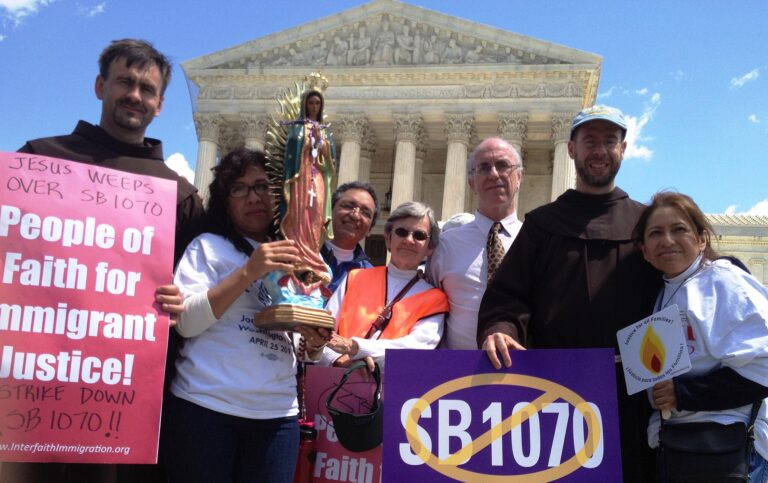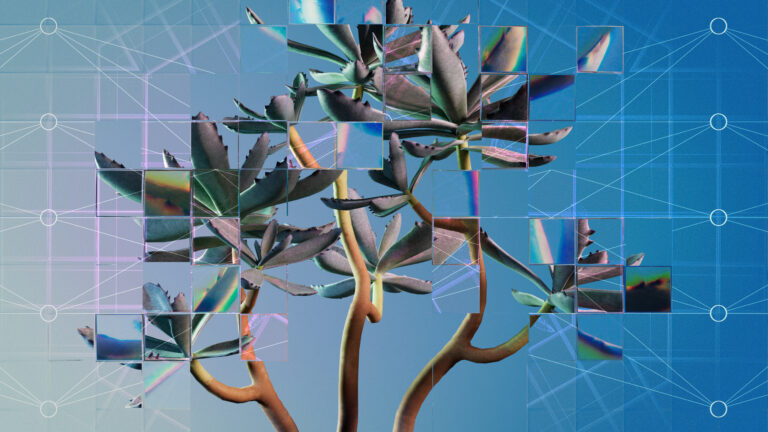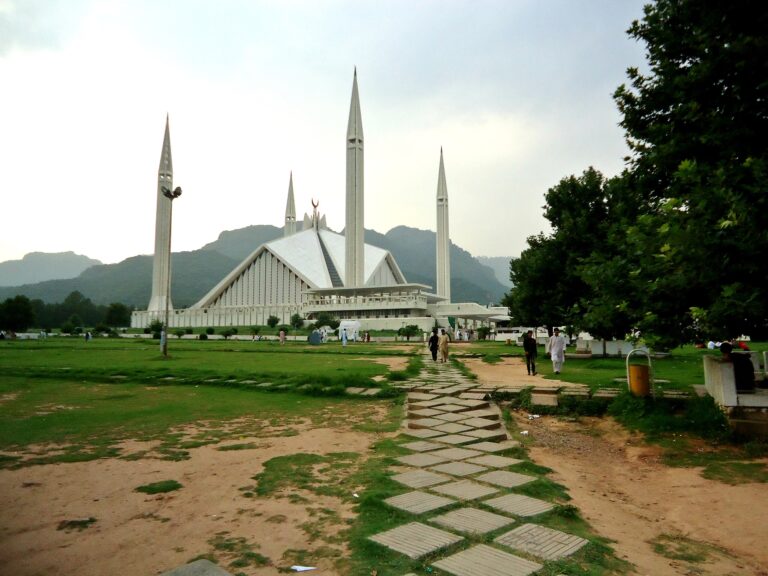
Migration Policy behind the Veil of Ignorance: “Race” and “Religion” in the 2024 EU Migration Pact
Ulrich Schmiedel and Dianne van den Bosch
European Union Foreign Affairs Council in Brussels by Estonian Foreign Ministry (CC BY 2.0)
This article is part of our series on Law, Religion, and Immigration. If you’d like to explore other articles in this series, click here.
The 2024 European Union Migration Pact is a significant new set of policies aimed at unifying the EU’s approach to the management of forced migration. On its website, the European Commission states that the Pact provides “a set of new rules … establishing a common asylum system at EU level” which is meant to “amend previous reform proposals in the area of migration, offering a comprehensive approach that aims at … integrating key EU policies.” The Pact has stirred up controversies among governmental and non-governmental organizations alike.
The categories of race and religion are conspicuous by their absence from both the Pact and the controversies about the Pact. As scholars of religion interested in the ethical and political impact of migration law(s), we suggest that this absence is not accidental. The Pact’s silence on “race” and “religion” allows the EU to present itself as a neutral arbiter between demands made by migrants and demands made by members of the EU. This self-presentation counters any call for justice that takes religious and racist discrimination into account before such a call could even be made. For people attempting to make it over the borders of “Fortress Europe,” the new Pact means more of the same—more discrimination, more deportation, and more deaths at one of the most dangerous borders in the world.
“Justice” in the EU Migration Pact
The Pact resonates with John Rawls’s celebrated concept of justice. In his seminal study A Theory of Justice, Rawls suggested that the best way to think about justice is to imagine a conversation between people about the society in which they would like to live. In this conversation, they come up with a plan for their society. But they have no idea which position they might hold once their plan is put into practice. Will they be among the privileged? Will they be among the underprivileged? And who or what will decide their position?
Rawls claims that the answers to these questions must be hidden behind what he calls “the veil of ignorance”: “This ensures that no one is advantaged or disadvantaged in the choice of principles by the … contingency of social circumstances. Since … no one is able to design principles to favor his condition, the principles of justice are the result of a fair agreement.” (11) According to Rawls, then, the veil of ignorance guarantees that all the positions in the society that the people are planning are at the very least agreeable. Since it is hidden which position you might hold, you insist on some sort of principle from which those who have more will benefit less and those who have less will benefit more so that society as a whole is at least on the way to equality.
Rawls insists that the veil of ignorance covers “race” (85-86) as well as “religion.” (193-194) For Rawls, “race” functions as a marker for a person’s position—her place in the society—while “religion” functions as a marker for a person’s philosophy—her beliefs about her place in the society—both of which must be ignored to arrive at a theory of justice that is agreeable to all.
Although there are no references to Rawls in the Pact, the EU’s policy proposals could be read as an application of the veil of ignorance to the planning of migration policy. Accordingly, the Pact aims at ordering or re-ordering the relationships between privileged and underprivileged migrants as well as the relationships between privileged and underprivileged member states of the EU, all without getting into what Rawls called the “contingency of social circumstances”—read: “race” and “religion.”
The EU Migration Pact as a System of Solidarity?
When it comes to members, the Pact suggests a system of solidarity that unburdens EU states with external borders and burdens EU states with internal borders. The difference in privilege—in this case, the difference that comes with a state’s proximity or non-proximity to the EU border—is meant to be managed through this system. To avoid confrontation over relocations, the system is flexible. “Flexibility” involves a mix of voluntary and involuntary contributions from EU members, which means that states can circumvent the relocation of migrants on their territory by contributing funding to capacity-building measures, such as the strengthening of the EU’s borders. For the EU, then, flexibility is the key here.
When it comes to migrants, the Pact also suggests a system of solidarity—but here it is a system that is meant to manage the difference between privileged and underprivileged migrants. The Pact introduces “vulnerability checks” which are intended to prioritize the protection of people “in need,” in particular the “most vulnerable,” identified as “families with children”. Hence, migrants who are considered more vulnerable are meant to benefit more, while migrants who are considered less vulnerable are meant to benefit less from the new policies. However, what is meant by “vulnerability” is left vague. As a marker that draws the line between deserving and undeserving migrants, it is framed as a condition that lies beyond a migrant’s agency. One cannot make oneself vulnerable. Yet, it is crucial to note that the Pact connects its concern for vulnerability to “compliance.” Hence, a person who is considered to be less vulnerable can increase their chances of admission by being more compliant, while a person who is considered to be more vulnerable can decrease their chances of admission by being less compliant. At the end of the day, the distinction between the privileged and the underprivileged is tailored to the EU’s priorities. “The racialized mapping of responsibilities,” Dan Bulley stresses in A Relational Ethics of Migration: Hospitality and Hostile Environments, “is difficult to ignore, though the ethics of immigration literature generally does so.” It “emerges from an ethos built at least in part on white nationalism.” But for the EU, fairness is the key idea here.
As a whole, then, the Pact gives the impression that its authors are after a system that is about flexibility for members and fairness for migrants. In a striking study of EU migration legislation, Eleni Karageorgiou and Gregor Noll stress that solidarity is a misnomer when it comes to the relationship between members and the relationship between migrants. The EU’s approach to migration is the opposite of solidarity, “unless we understand it as synonymous to defense against an external threat risking to turn into an internal one.” But what could and should flexibility and fairness mean in a migration regime that has been marked by racist and religious discrimination since its very inception?
“Race” and “Religion” in Europe’s Law of Migration
In The Crisis of Multiculturalism in Europe, historian Rita Chin argues that the constitution of the EU’s migration policy came with a shift from what could be called “color-coded racism” to what could be called “culture-coded racism” revolving around religion. Chin captures this shift as a “new racism” (139)—a system of racialized thinking in which the category of religion has replaced the category of race as a marker of difference. In a process shaped by internal as well as external factors, such as the terror attacks of 9/11, “the new forms of racialized thinking fully crystallized around … the intractability of Muslim culture. This emerging consensus often treated Islam in much the same ways that earlier forms of racial science had presented phenotype and physiognomy—that is, as an inherited, unchanging boundary between groups of people” (195).
In this culturalization of “race,” it makes very little sense to distinguish between religious and racist discrimination in the Islamophobia that targets Muslimness or perceived Muslimness because these categories intersect in the very construction of the marker. (It doesn’t matter whether the person perceived as Muslim actually is or isn’t Muslim for the discrimination based on their perceived Muslimness to kick in.) When it comes to the EU’s migration regime, religion is racialized and race is religionized.
At least with the Russian invasion of Ukraine, the impact of Muslimness as a marker of differentiation between deserving and undeserving migrants has become evident. Several countries which had slammed their doors shut to people on the move opened them to Ukrainians. Many faith-based refugee relief organizations, such as the Churches’ Commission for Migrants in Europe, stressed that a differentiation based on racist and religious discrimination has been set up here. On the one hand, Ukrainian people, considered to be white, Christian Europeans and therefore deserving of help. On the other hand, non-Ukrainian people, not considered to be white, Christian Europeans and therefore undeserving of help. As Moustafa Bayoumi, Professor of English at Brooklyn College in the City University of New York argued in The Guardian immediately after the Russian invasion: “If we decide to help Ukrainians in their desperate time of need because they happen to look like ‘us’ or dress like ‘us’ or pray like ‘us’ …, then we have not only chosen the wrong reasons to support another human being. We have also, and I’m choosing these words carefully, shown ourselves as giving up on civilization.”
Bayoumi alludes to the contagious concept of the “clash of civilizations,” where Christianity is considered to combat Islam as much as Islam is considered to combat Christianity. This very construct has had a massive impact on the making and maintenance of the EU’s migration policies past and present. Yet the Pact accounts neither for the racist nor for the religious discrimination so characteristic of the European migration regime predicated on this construct. On the contrary, the authors of the Pact approach migration as an irritation that can be managed by recalibrating the system without admitting that they themselves sit at the core of this very system. They pretend not to be in the picture.
Corrective Justice under the Veil of Ignorance
What we suggest, then, is that the Pact strategically and specifically positions the EU behind the veil of ignorance in order to see neither the privileged position that members have, nor the underprivileged position that migrants have—let alone the power that the EU holds as self-appointed arbiter between members’ and migrants’ demands. Here, the fiction of the veil of ignorance plays out a dubious and dangerous power. Because the Pact ignores the co-constitution of “race” and “religion” in its conceptualization of migration policy, it continues the practices of racist and religious discrimination that have characterized the EU since it interpreted migration as a policy issue. The Pact discusses the competing demands between migrants as well as the competing demands between member states—yet it has nothing to say about the demands that migrants might have on members.A proposal that could take racist and religious discrimination in the EU’s migration policy past and present into account would have to be conceptualized in terms of corrective rather than color-blind justice. But such a proposal and promotion of justice is precisely what is prevented by the self-presentation of the EU as neutral. A new approach would require for the veil of ignorance to be lifted in order to come to terms with the dehumanization that the EU’s migration policies preserve and promote. ♦
This essay is an outcome of research conducted in the project “Faith-Based Refugee Relief in Europe: Connecting the Empirical and the Ethical (FABRIC).” This project has received funding from the European Research Council (ERC) under the European Union’s Horizon programme (Grant agreement No. 101116763).


Ulrich Schmiedel is Professor of Global Christianities at Lund University, Sweden. He has written widely on public and political theology. Currently, he is running a 5-year research project on “Faith-Based Refugee Relief in Europe: Connecting the Empirical and the Ethical,” funded by the European Research Council.

Dianne van den Bosch is a doctoral student in Ethics at Lund University, Sweden. Combining empirical and conceptual methods, her work investigates how faith-based care is practiced in the European migration context.
Recommended Citation
Schmiedel, Ulrich and van den Bosch, Dianne. “Migration Policy behind the Veil of Ignorance: “Race” and “Religion” in the 2024 EU Migration Pact.” Canopy Forum, November 12, 2025. https://canopyforum.org/2025/11/12/migration-policy-behind-the-veil-of-ignorance-race-and-religion-in-the-2024-eu-migration-pact/.
Recent Posts


